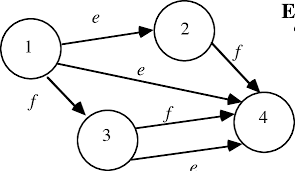
“Associated Entities” Employing Statutory Coal Mining Officials. What does it mean in simple English?
The draft changes to employing Statutory Officials under the Qld Coal Mining Act have introduced totally new terms/concepts and references the Commonwealth Corporations Act
- “associated entity” which is defined as “has the meaning given by the Corporations Act, section 50AAA.”
- “entity” which has no referred to definition
- “associated entity” under section 50AAA introduces other terms never used or defined in the Coal Mining Legislation. Words, terms and definitions for “affairs“, “interest” and “asset“.
No sane person could think these words would make the employment relationship easier to understand, comply to, and enforce.
Trying to understand exactly what the changes meant, I looked up Section 50AAA. (The section is included in full further in this post).
I am not even going to try and explain what it means. I am not a Federal Court Judge.
By the time I got half way through 50AAA, I was more than confused.
I do not understand why these terms are to be introduced and what it all means.
The word “Asset” being introduced is particularly concerning due to an Interpretation given by the Chief Inspector about what the “Asset” can and cannot do, when it is not even referred to anywhere in the Current Act
BMA refers to the Asset almost continually (eg BMA Asset President)
The Interpretation from the Peter Newman CIOCM of the Asset and what it can and cannot do, was already hugely problematic and in my view totally incorrect, illogical and against the wording and intent of the Current Act. (I will do a separate post to fully explain why”
I am sure BMA are very pleased that “Asset” is to be introduced by stealth
Also given the title and wording of Section 50AA “Control” I would hazard a guess as to why 50AA has not been included.
Whatever 50AAA means, 50AA is crucial to how 50AA is supposed to mean, be interpreted and implemented.
The concept of control is implicit in the reasons for the existing provisions words of “only if the person is an employee of the coal mine operator”
I am sure the deliberate omission of any reference to 50AA is to the advantage of the Coal Mine Operator not the Coal Mine Worker
BMA essentially made a take it or leave it offer to it’s OCE’s to sign a staff contract if the wanted to remain a full time OCE.
It came with a new job title with additional roles.
All done under the pretense of directly employing them as per the 2020 changes to the Act.
BMA were successful in my view, because no one challenged BMA in court.
BMA actions were clearly not the intent of the original legislation change as detailed in the parliamentary committee report.
If the draft new wording is introduced how much more corrupted and removed from the intention can the whole situation become.
The existing requirements for employing Statutory Officials typically read like the one for Underground Coal Mines.
The coal mine operator for the underground mine must ensure that a site senior executive required to appoint a person under subsection (2) or (4), or an underground mine manager required to appoint a person under subsection (8), (9) or (10), appoints a person under the subsection only if the person is an employee of the coal mine operator.
The wording “ only if the person is an employee of the coal mine operator” is twelve easily digested words.
What is to be gained by changing them to the draft words?
Total and utter confusion is about all, and essentially do what they think the words can be stretched to apply to?
The up to now secret draft changes to the employment provisions of Statutory Officials is typically close to the following
(a) for an appointment under subsection (2), (4) or (8)—
(i) the coal mine operator; or
(ii) an associated entity of the coal mine operator; or
(iii) an entity that employs or otherwise engages 80% or more of the coal mine workers at the mine; or
I have included the link below for Section 50AAA of the Corporations Act since when you click on the highlighted words such as “associate” the link to the definition for that word under the Corporations Act
http://www5.austlii.edu.au/au/legis/cth/consol_act/ca2001172/s601waa.html#interest
CORPORATIONS ACT 2001 – SECT 50AAA
(1) One entity (the associate ) is an associated entity of another entity (the principal ) if subsection (2), (3), (4), (5), (6) or (7) is satisfied
(2) This subsection is satisfied if the associate and the principal are related bodies corporate.
(3) This subsection is satisfied if the principal controls the associate.
(4) This subsection is satisfied if:
(a) the associate controls the principal; and
(b) the operations, resources or affairs of the principal are material to the associate.
(5) This subsection is satisfied if:
(a) the associate has a qualifying investment (see subsection (8)) in the principal; and
(b) the associate has significant influence over the principal; and
(c) the interest is material to the associate.
(6) This subsection is satisfied if:
(a) the principal has a qualifying investment (see subsection (8)) in the associate; and
(b) the principal has significant influence over the associate; and
(c) the interest is material to the principal.
(7) This subsection is satisfied if:
(a) an entity (the third entity) controls both the principal and the associate; and
(b) the operations, resources or affairs of the principal and the associate are both material to the third entity.
(8) For the purposes of this section, one entity (the first entity ) has a qualifying investment in another entity (the second entity ) if the first entity:
(a) has an asset that is an investment in the second entity; or
(b) has an asset that is the beneficial interest in an investment in the second entity and has control over that asset.
This is the section that deals with control
CORPORATIONS ACT 2001 – SECT 50AA
Control
(1) For the purposes of this Act, an entity controls a second entity if the first entity has the capacity to determine the outcome of decisions about the second entity’s financial and operating policies.
(2) In determining whether the first entity has this capacity:
(a) the practical influence the first entity can exert (rather than the rights it can enforce) is the issue to be considered; and
(b) any practice or pattern of behaviour affecting the second entity’s financial or operating policies is to be taken into account (even if it involves a breach of an agreement or a breach of trust).
(3) The first entity does not control the second entity merely because the first entity and a third entity jointly have the capacity to determine the outcome of decisions about the second entity’s financial and operating policies.
(4) If the first entity:
(a) has the capacity to influence decisions about the second entity’s financial and operating policies; and
(b) is under a legal obligation to exercise that capacity for the benefit of someone other than the first entity’s members; the first entity is taken not to control the second entity.


